I come from a background of Russian hardstyle kettlebells and other strongman-style lifts that incorporate your entire kinetic chain. When I use the word “strength,” I am referring to functional ability rather than your ability to isolate muscle.
While muscle isolation exercises require muscle tension, full kinetic exercises require highly developed motor patterns, flexibility, and muscle tension. The more directly an exercise relates to daily activity, the more it relates to strength.
In this article, I’m going to share my experience when it comes to developing strength, how your shoulder and hip flexibility might be limiting your potential, and how to remedy that situation for greater strength gains.
Flexibility in Strength Training
Hip and shoulder mobility are the biggest limiting factors I see with new clients. As I progress my clients from bodyweight movement into resistance training, I teach them to control weighted objects from the ground all the way to overhead and back again in various ways.
“When it comes to posture, physical capability and risk of injury, flexibility is king.”
The Turkish get up is one movement that utilizes the overhead position to help develop stability and flexibility. This stability and flexibility carries over to every other lift. Over the past decade, I have seen major improvements from my students in core strength, flexibility, and posture through proper overhead lifting.
I find that muscle tightness overcomes muscle strength in both the hips and shoulders and prevents people from lifting to their potential. Even the strongest people I have trained can make relatively light weights look (and feel) heavy, simply because they lack the range of motion to neutralize the weight.
Weight held at shoulder level will feel much lighter if you can move your hips under the weight. Tight hip flexors will prevent you from doing this safely.
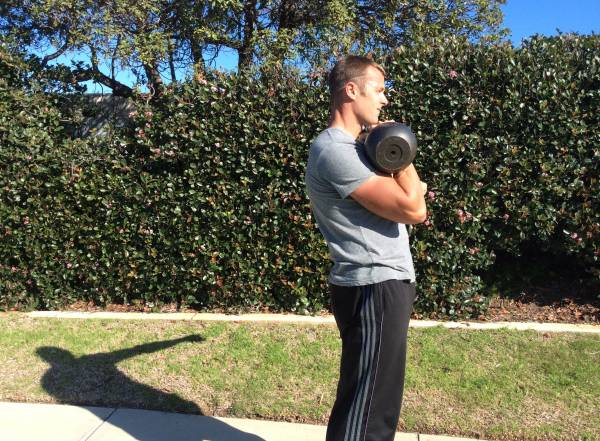 Cleaning weight will be much easier if you can keep the weight close to your body.
Cleaning weight will be much easier if you can keep the weight close to your body.
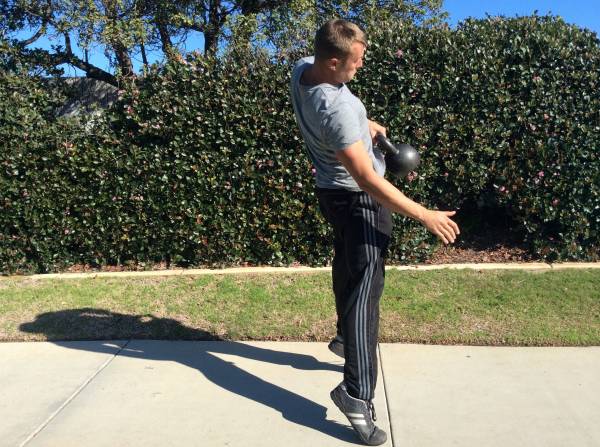
The snatch is another vertical lift that demands good flexibility to keep the bell close to your body.
Tight Hips
Tight hips adjust the alignment of the pelvis, often pulling it down in the front and causing it to move up in the back. This forward-tilting pelvis lengthens your abdomen and turns off your deep core stabilizers. It also puts tremendous stress on the lower back.
Every step you take requires hip extension. Thus, as your hip flexors tighten, your gait is altered. This results in the lumbar spine flexing with each step to compensate for the lack of extension in the hip. This can inhibit your running, sprinting, and even your daily walking. As your hip flexors become increasingly overactive, the strongest dynamic muscles of your body – your glutes and hamstrings (hip extensors) – begin to turn off. But your glutes and hamstrings should be the primary force behind walking and running.
In addition, the posterior chain muscles are the most capable muscles for lifting weight – not just off the ground, but also overhead. However, flexibility of the anterior chain is just as important when lifting weight. Tight hip flexors will shift weight out front of you, making it feel much heavier.
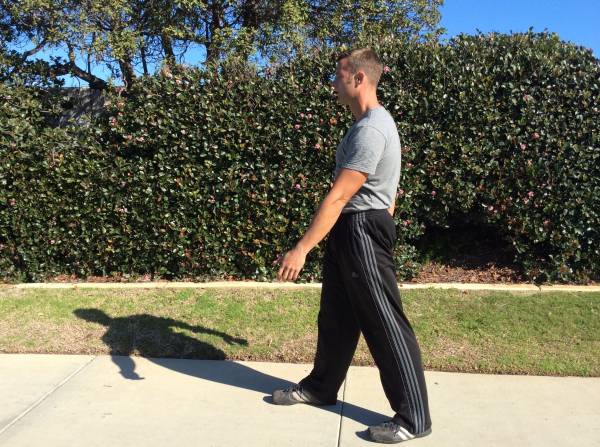
Gait (walking) with good range of motion in hips, notice my belt line is horizontal.
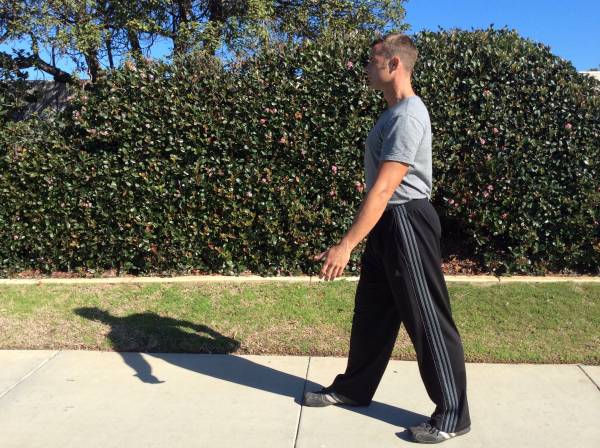
Gait with tight hip flexors. My belt line is tilting forward, lengthening the abdomen and putting excess stress on the lower back.
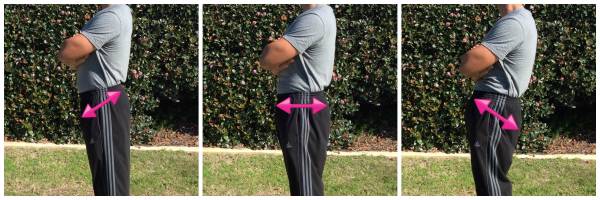
1) An anterior pelvic tilt while standing. 2) Proper standing posture. 3) A posterior pelvic tilt, less common than the anterior tilt, but still an undesirable postural deviation.
Tight Shoulders
Tight shoulders prevent you from being able to reach the lockout position overhead. This position is where weight is neutralized down the plumb line of your body. Not being able to achieve proper lockout will make even the lightest weights feel heavy and prevent you from performing many exercises.
“Even the strongest people I have trained can make relatively light weights look (and feel) heavy[.]”
I mentioned the Turkish get up earlier, but you can also train exercises such as overhead squats and windmills to develop your shoulders. Practicing and improving these exercises will have a direct carryover to your everyday life. Improving shoulder mobility will improve your motor patterns, posture, and flexibility, as well as reduce your risk of injury.
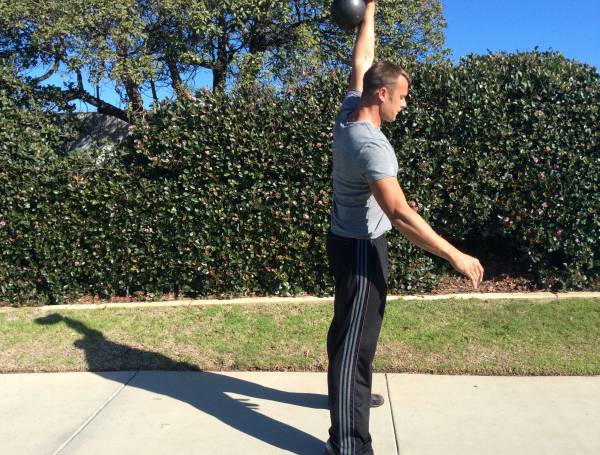
The overhead position from the side. The bell is positioned directly above the shoulders, hips, and feet.
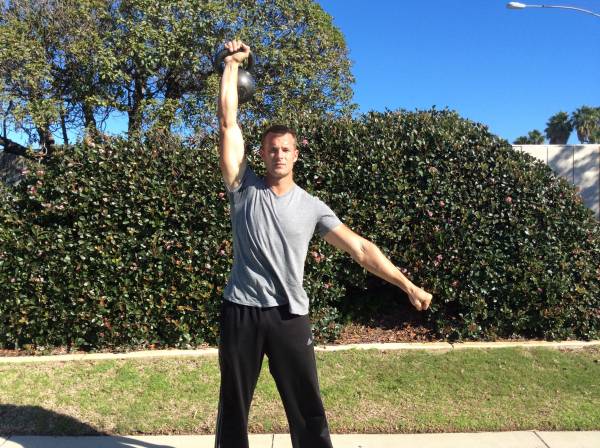
From the front, you can see my arm is straight and shoulder sunk down.
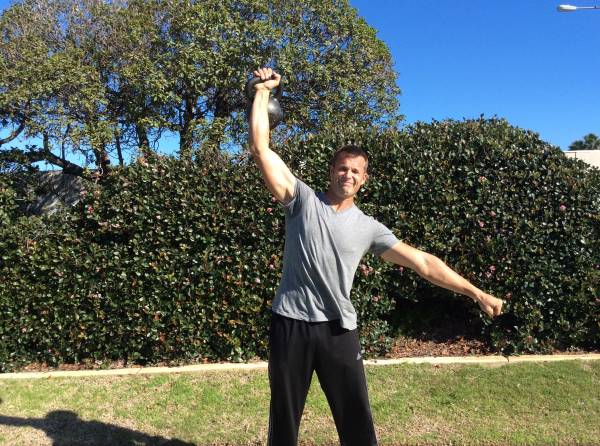
Tight shoulders make the weight feel heavy in the overhead position. Here you can see the weight is off to the side.
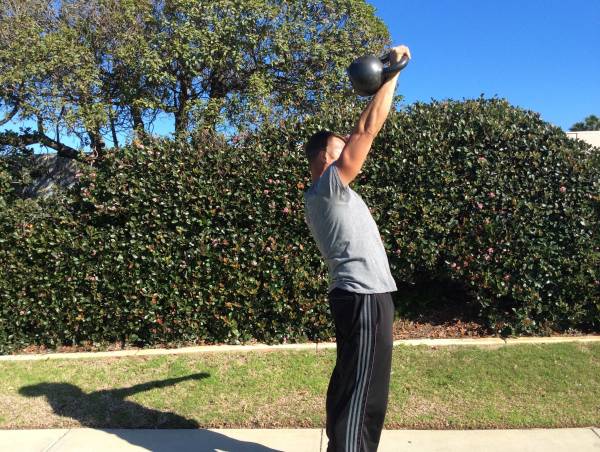
Tight lats move the weight out front, making it feel heavy.
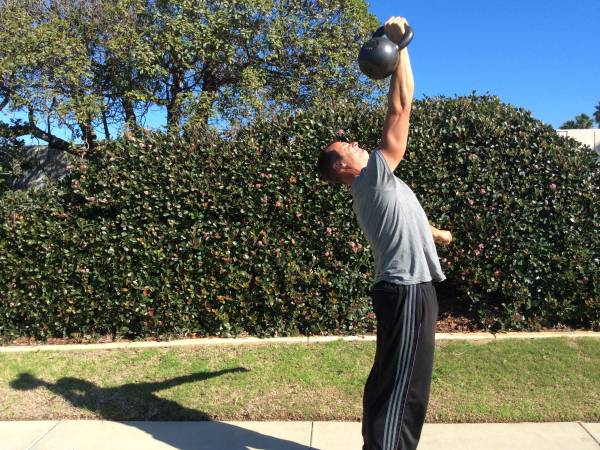
People with tight lats will often arch their back in an effort to get the weight to neutral position.
Improving Your Flexibility
I recommend using a combination of dynamic range of motion, active and static stretching, and massage. Self-massage with a foam roller, tennis ball, Thera Cane, or stick are great ways of releasing muscle tissue without the assistance of a therapist.
The general cause of muscle tightness isn’t usually in the muscle itself, but in your nervous system. In order for you to develop true muscle flexibility, you must teach your nervous system there is strength within a given range of motion.
When your body moves in a way it is unfamiliar with, your nervous system slams on the brakes, usually long before the muscle can fully lengthen. By keeping a muscle contracted while lengthening (an eccentric contraction) you will teach your nervous system strength within the range of motion. When you stretch, and thereby force the muscle into relaxation, you do not get this benefit.
“The general cause of muscle tightness isn’t usually in the muscle itself, but in your nervous system.”
I recommend a progression of full-range-of-motion exercises, each one opening the joint more than the last. It is important to allow proper development of the joint by altering the stability as well as the weight.
To develop range of motion in your hips, lunges are great. Squats and bend-to-extend movements, such as the deadlift or kettlebell swing, will also help create strength evenly in your hips. Start with simple variations and progress as you gain strength in each movement.
For your shoulders, full hang pull ups or pull up negatives, barbell pullovers, and overhead lifting will do the trick. Be careful lifting overhead at first, as tightness in your lats can cause you to arch your back as you press the weight overhead. Downward facing dog is another way to make sure the muscles of your shoulders are engaged while lengthened – a great way to teach your nervous system strength within a range of motion.
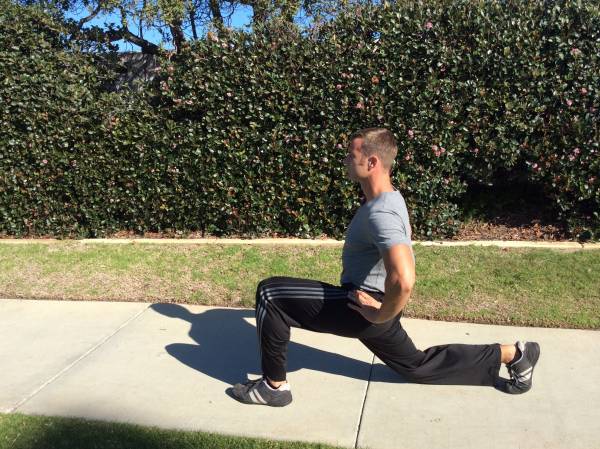
Lunges lengthen tight hip flexors. The back hip is in extension, teaching the muscles strength within a range of motion.
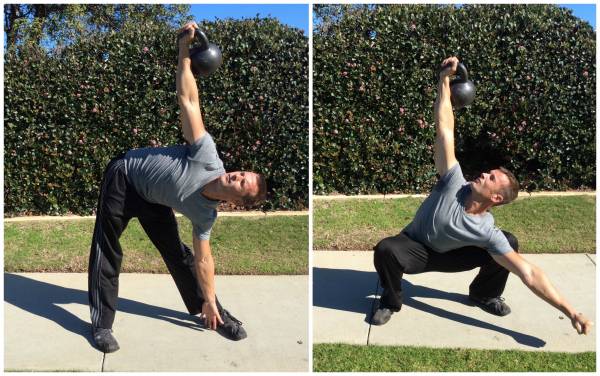 Windmills and overhead squats develop strength within a range of motion in both your hips and shoulders.
Windmills and overhead squats develop strength within a range of motion in both your hips and shoulders.
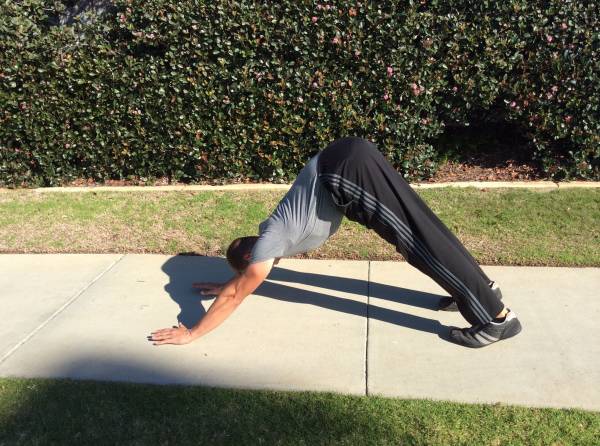 Downward facing dog creates strength within a range of motion in your shoulders.
Downward facing dog creates strength within a range of motion in your shoulders.
Flexibility Is King
What motivates me to train my clients and continue with my daily practice is to retain as much capability and grace in daily life as age sets in. When it comes to posture, physical capability and risk of injury, flexibility is king.
Check out these related articles:
- Connecting the Shoulders, Hips, and Core
- Release Your Tight Back and Hips With 4 Mobility Exercises
- How I Banished Hip Pain With Posture Alignment Therapy
- What’s New On Pulse Beat Fit Today






